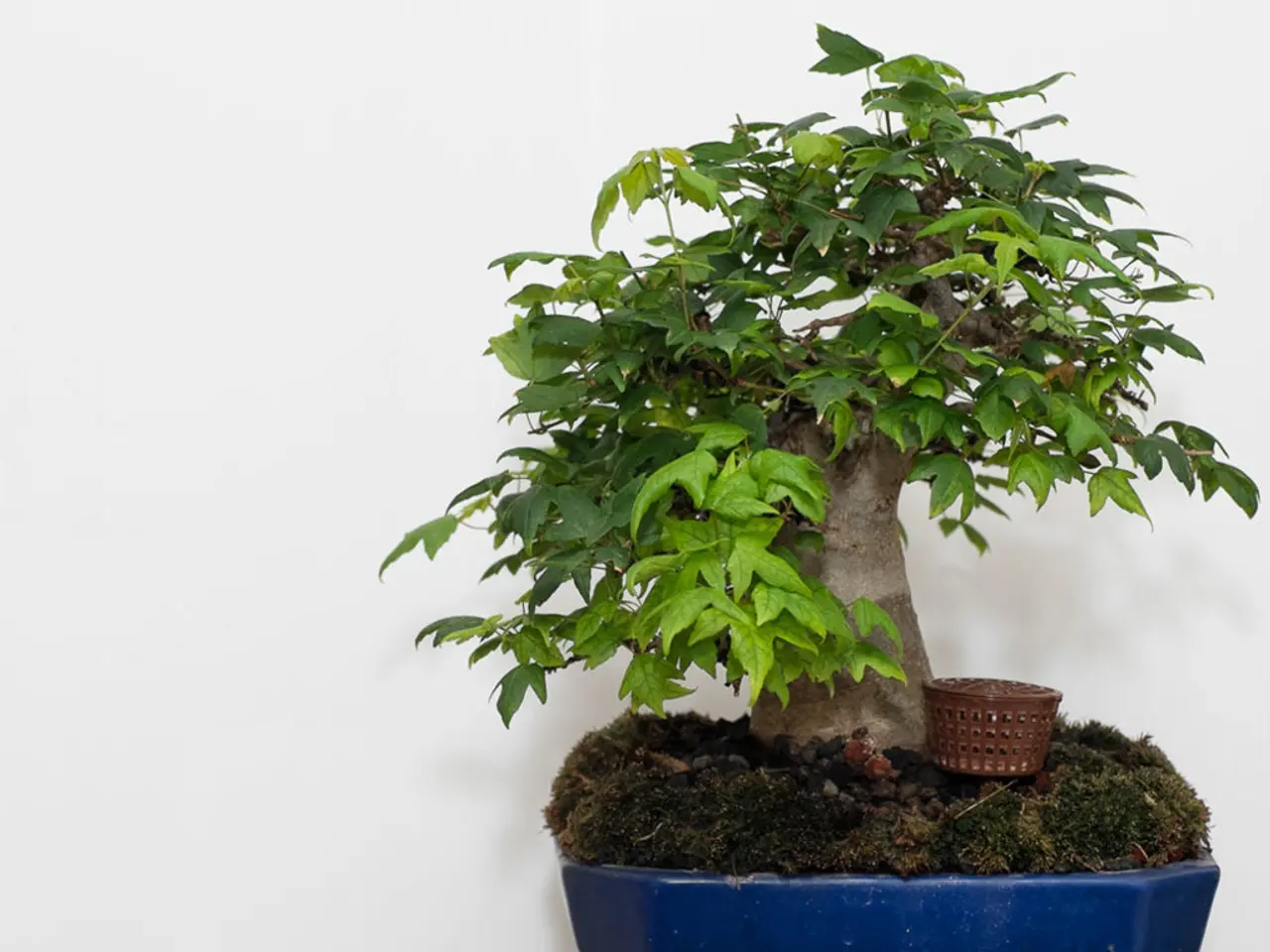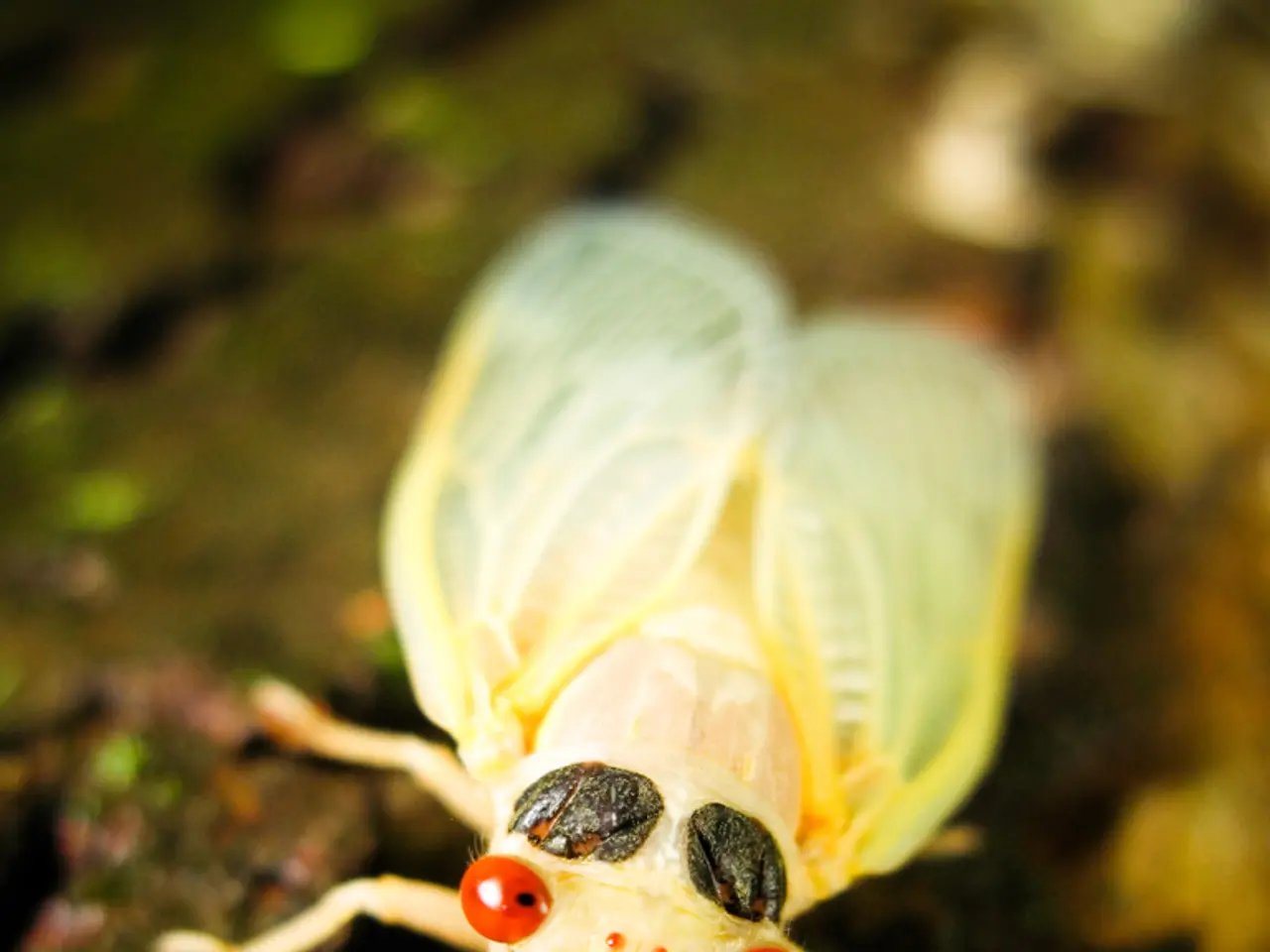Repotting Bonsai for Novices: An Overview and Core Procedures
In the world of bonsai, repotting is a crucial step to ensure the healthy growth and vitality of your tree. Here's a step-by-step guide on how to repot your bonsai successfully.
Root Pruning
When repotting, it's essential to carefully prune the roots, especially if your bonsai is root-bound (roots circling tightly or growing out of drainage holes). Avoid cutting more than one-third to two-thirds of the root mass and refrain from cutting the main taproot. This process encourages new, healthy outward root growth and prevents the tree from becoming pot-bound again.
Retaining Native Soil
Avoid fully bare-rooting the bonsai during repotting. Keeping some of the original soil around the roots helps reduce transplant shock and supports microbial health beneficial to the tree.
Pot Selection
Choose a pot that suits the bonsai's size. A pot too small will encourage root binding, so a proper fit is essential for healthy root expansion. Consult with nursery experts if possible to ensure you select the right pot.
Post-Repotting Care
After repotting, maintain balanced soil moisture—neither too wet nor too dry. Lightly misting the foliage multiple times daily can help newly repotted trees acclimate. Adding a layer of moss or organic mulch can help retain moisture, but be cautious of overheating if in direct sunlight.
Repotting Frequency
Regular repotting every 2–3 years is generally recommended to refresh nutrients and provide space for roots, though growth rate and species may affect timing.
Additional Tips
- Gently tease out any circling or tangled roots when removing the tree from its pot.
- A well-draining potting mix is essential for bonsai repotting, as it prevents water from accumulating in the soil.
- Repotting during certain times can cause undue shock or disrupt development, so consider the tree's dormancy and active growth periods to minimize stress.
- Handle the roots with care to prevent damage or breakage when removing the tree from its pot.
- Note the moisture levels and adjust your watering schedule accordingly.
- Inspect the soil for signs of pests, disease, or nutrient depletion when removing the tree from its pot.
- Establish a consistent watering schedule to guarantee your bonsai receives the right amount of moisture, without over- or under-watering.
- Initially, water your bonsai daily after repotting, monitoring soil moisture, then gradually decrease frequency as the tree stabilizes.
- Assess the tree's overall health during the removal process and identify areas that require attention.
- The delicate movement of removing the tree from its pot requires patience and attention to detail.
- Use specialized bonsai techniques, such as root pruning and root reduction, when pruning and trimming the roots.
By following these steps, you'll promote healthier root systems and overall bonsai vitality while preventing root-bound conditions. It's not recommended to repot your bonsai in the same pot, as the old potting mix and potentially clogged drainage holes can hinder healthy root growth and cause long-term damage. Happy repotting!
Cultivating a balanced 'lifestyle' for your bonsai includes paying attention to the details of its 'home-and-garden' environment, such as the choice of pot and the process of repotting. Moreover, gardening and caring for your bonsai involves understanding the significance of root pruning and retaining native soil during repotting, highlighting the importance of maintaining a healthy root system and preventing root-bound issues.




